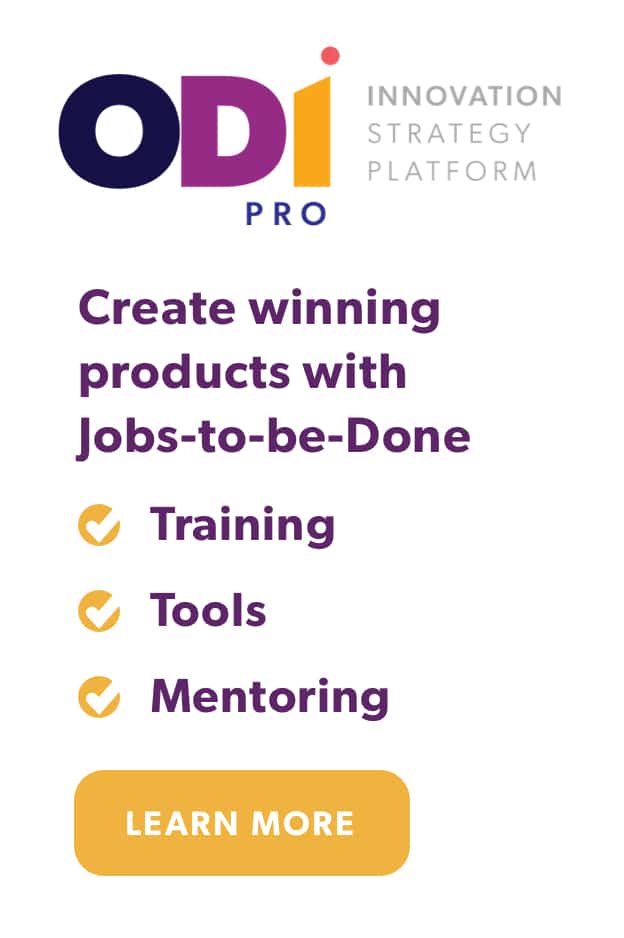Acknowledging who is ultimately responsible for product innovation — and ensuring they have the tools to succeed — can dramatically improve a company’s innovation success rate.
When it comes to introducing new products, companies excel: they introduce thousands of new products every year. Unfortunately, most of them fail. This highlights the real issue that plagues companies worldwide:
Companies do not struggle to create products. Rather, they struggle to create the right products, i.e., those that are certain to win in the marketplace.
This raises an important question:
In your company, who is responsible for deciding what products will enter the product development process — and for making sure they are the right products?
As it turns out, innovation is not everybody’s responsibility. Ironically, in most companies just a hand full of people decide what products will enter the product development process.
This small group of people (which is likely to include VP’s, directors and other managers) is ultimately responsible for innovation: for ensuring the products they approve for development will be successful in the marketplace.
If they approve products that fail to exit the development process or fail in the marketplace, they will have wasted the company’s time, money and resources. Consequently, their ultimate goal is to ensure only winning products enter the product development process — and reject all others.
While this may sound like an impossible task, it is not. But to be successful, this small group of people (let’s call them the Product Oversight Team) must learn to think and act differently. To help a company excel at product innovation, this team must:
- Acknowledge that they are responsible for innovation — and work to ensure only winning products enter the development process.
- Ensure each product team (developers, engineers, scientists, marketers and others) has the information it needs to conceptualize winning solutions, i.e., products and services that get the customer’s “job” done better and/or more cheaply.
- Be able to assess, with a high degree of certainty, which proposed solutions will get the “job” done best and win in the marketplace. This means they must have a fail-safe method in place for deciding which products to invest in.
The tools needed to achieve these objectives are available as part of the Outcome-Driven Innovation (ODI) process, but they are rarely utilized by the Product Oversight Team, as they often delegate innovation responsiblities to others in the organization. It’s time for management to lead the innovation effort and to think differently.
Management is responsible for the company’s success at innovation
Product innovation isn’t everybody’s responsibility. It is management’s responsibility. Management’s failure to recognize and take on this responsibility has contributed greatly to the poor innovation success rates that companies struggle with today.
It’s understandable: nobody wants to be responsible for a process that appears to be random and unpredictable. But by delegating the responsibility for innovation to “everybody”, management is contributing to its seemingly unpredictable nature.
The truth is innovation is no longer an unpredictable process. The kinks have been worked out. Jobs-to-be-Done Theory and ODI make innovation far more predictable. The Product Oversight Team must recognize this fact and lead the drive towards predictable innovation. After all, only management can make sure the organization has the information it needs to succeed and install the discipline that is needed to ensure only winning products enter the development process.
Ensure the organization has the data it needs for innovation
All too often companies put products into their development pipeline without cross functional agreement on: (i) who the customer is, (ii) what the customer’s needs are, or (iii) which customer needs are unmet. In most companies, these questions are highly debated and often go unanswered.
As a result, when it comes to product innovation, developers struggle to conceptualize winning products and managers struggle to separate the winning product ideas from the losers.
In order to devise winning solutions, the product team must agree on these fundamental inputs — and making the Product Oversight Team responsible for ensuring they have these insights makes good sense. Currently, in most companies, nobody is responsible for ensuring product teams have a common understanding of the problems (jobs-to-be-done) they are trying to solve.
In fact, it is often accepted as an unavoidable business practice that sales, marketing, development and R&D will never be on the same page. This has to change.
A common understanding of the customer and alignment on the customer’s needs can be accomplished by ensuring each product team invests in applying Jobs-to-be-Done Theory and Outcome-Driven Innovation to its markets. This may require both governance and funding from the Product Oversight Team.
The Product Oversight Team should recommended that each product team:
- Learn the fundamentals of Jobs-to-be-Done Theory and the ODI process.
- Participate in a facilitated qualitative research discussions designed to obtain the customer’s desired outcome statements (see Inventing the Perfect Customer Need Statement).
- Conduct quantitative research to determine which outcomes are under/over-served, and by how much (see Reinventing Market Research to put Jobs Theory into Practice).
- Secure cross-functional agreement on what the customer’s needs are and which are unmet.
- Use their newfound insights to conceptualize and refine products and services that address the customer’s underserved outcomes and get the “job” done better and/or more cheaply.
- Evaluate their best ideas against the desired outcome statements to quantify just how much better they get the job done and their likelihood of winning in the marketplace.
- Use the data to justify to the Product Oversight Team why they should approve the proposed product/service for development.
Each product team will be far more likely to create winning product concepts when applying this discipline.
Determine what ideas have the best chance of winning in the marketplace
The Product Oversight Team can use the same insights used by the product team to help evaluate the product concepts that are submitted for approval. In other words, the Product Oversight Team can enforce discipline by asking those who submit product concepts for development to quantify just how much better and/or more cheaply they enable customers to get the job done.
Then they can apply a rule set that helps guide their investment decisions. For example, they may decide to:
- Only invest in new products and services that will help customers get a job done at least 20% better.
- Only invest in sustaining products that will help customers get a job done at least 5% better.
- Seek out products that will help customers get the job done both significantly better and cheaper.
- Avoid investing in disruptive solutions targeted at underserved market segments.
- Avoid investing in differentiated, higher cost solutions targeted at overserved market segments.
With the right benchmarks in place — and the data required to ensure the benchmarks have been met — the Product Oversight Team, and the company as a whole, will be much more effective at ensuring only winning products enter the product development process. This will dramatically cut waste in product development and lead to significant time and cost savings.



